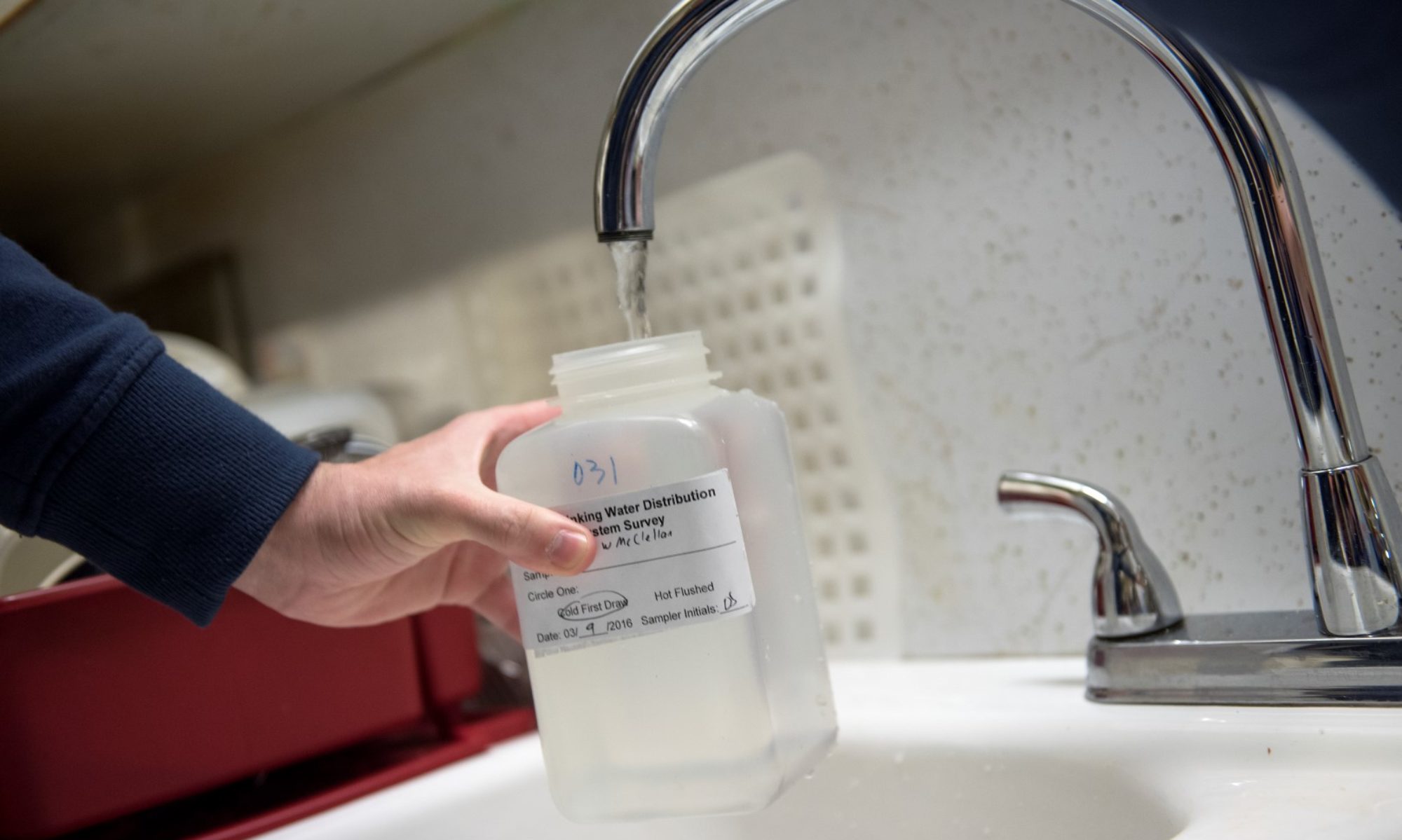Preliminary Analysis of Puerto Rico Water Samples
Volatiles, Semi-Volatiles, Metals and Chlorine
[Oct 31, 2017] Update: EPA’s own testing confirms that the “water originated from a drinking water system, not from Superfund wells“. Read EPA’s latest news release here (English version from Google Translate). CNN story on EPA testing.
CNN reporters collected water samples from three locations (Santa Rosa, Maguayo-2 and Maguayo-4) derived from a water treatment plant that was located in or near a superfund site, and shipped them by express mail service to Virginia Tech.
Contaminants: We hypothesized that there would be very serious levels of water contamination for Tetrachloroethylene (PCE), Trichloroethylene (TCE) and other contaminants known to be a problem at some locations within the Superfund site. This was an emergency sampling led by CNN reporters with samples collected under non-standard conditions, in order to detect obvious chemical risks and dangers if they were present. We fully expected that our results would inform people who have been driven to using this water out of desperation, of the potential health risks, above and beyond those normally expected from compromised water sources after natural disasters.
To our surprise, the levels of contaminants in the water samples shipped to us were meeting Federal standards for potable water—suggesting these water sources were not as dangerous as was initially feared.
We did find PCE in the Santa Rosa well at 0.7 ppb compared to an existing Federal drinking water standard of 5 ppb.
Chlorine residual: We found relatively high levels of free chlorine (1.8-5.0 mg/L as Cl2) disinfectant in the water even after shipment to Virginia Tech. Free chlorine is added to help reduce public health risks from dangerous bacteria, and these levels are consistent with treated potable water. We did not analyze for bacteria.
Trihalomethanes: As expected given the high levels of free chlorine disinfectant, we found significant levels of disinfection by-products in the samples at levels of 6-48 ppb total trihalomethanes (TTHMs). These TTHM levels are lower than the existing federal TTHM standard of 80 ppb and are therefore in a range considered normal. TTHMs are formed whenever water is disinfected with free chlorine to control bacteria. Because we did not quench the chlorine at the point of collection, the TTHMs in these samples had additional time to form during shipping, so the levels measured at Virginia Tech are likely quite a bit higher than when the sample was collected.
Metals in water analysis: We also did a complete Inductively Coupled Mass Spectrophotometer (ICP-MS) analysis for metals in these samples and detected nothing out of the ordinary.
The United States Environmental Protection Agency (EPA) is currently conducting a more thorough and more rigorous evaluation of these water sources—those results will be more accurate and conclusive than the very preliminary and non-standardized sample analysis presented herein. We were also only sent one sample per well. If more intensive sampling was conducted, there would be a greater likelihood of detecting contaminants of potential public health concern. Moreover, levels of contaminants present in wells can vary with time–a well that is near a source of contamination testing low for contaminants one day, can test higher another day.
Obviously, while no one could ever recommend drinking water from a source located in or around a superfund site, without a thorough scientific and engineering evaluation of the source water, water treatment and regulatory testing by certified laboratories– the water samples analyzed at Virginia Tech were consistent with existing standards for potable water for the targeted contaminants of interest. Our preliminary analysis indicates that this suspect water source, may not be as dangerous as was initially feared.
A month after the severe damage caused by Hurricane Maria, obtaining and safe clean water in Puerto Rico is still a very high public health priority. It is disappointing that the situation remains so desperate, that many residents are still compelled to use such suspect water sources.
Download all data below:
CNN VolatileOnly_Data Puerto Rico Oct 2017
CNN ICP-MS Metals Puerto Rico Oct 2017
CNN Semi-Volatiles_Data Puerto Rico Oct 2017
Write-up: Dr. Marc Edwards
Sample analysis: Dr. Jeffrey Parks / Ms. Jody Smiley
Posted: Oct 22, 20176
